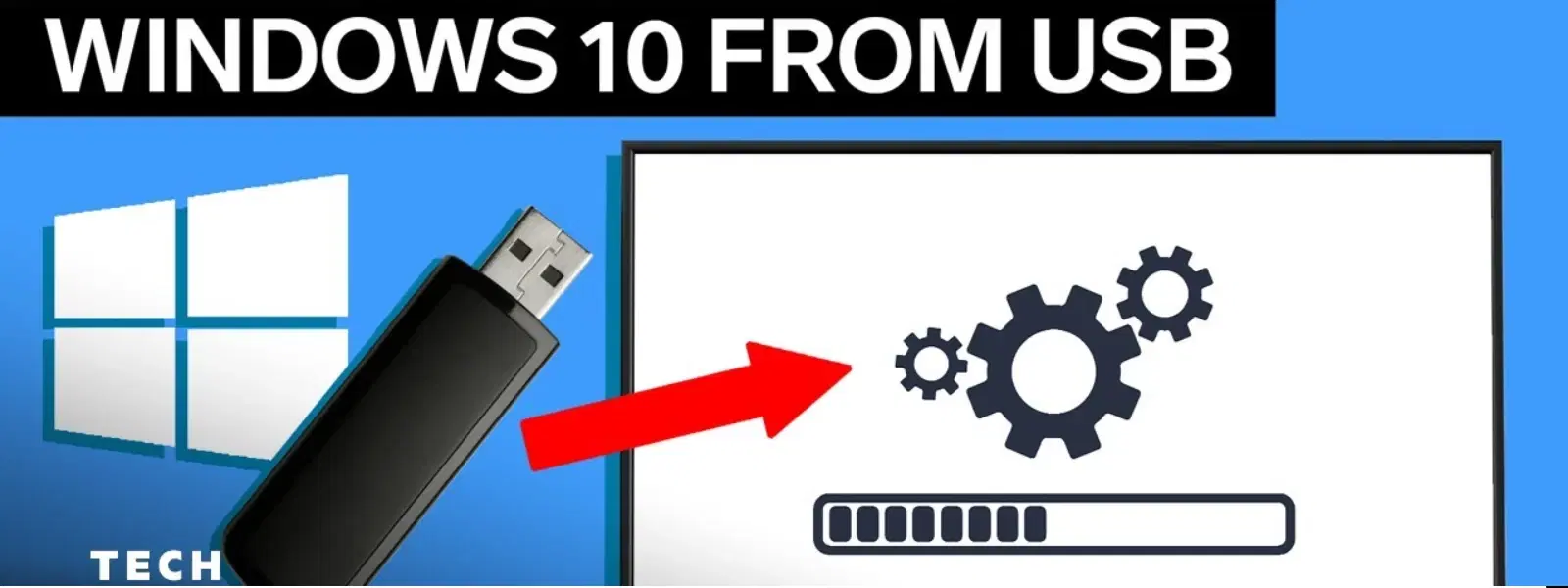
Consumer Electronics
•03 min read
Have you ever wondered how to install Windows 10 quickly and efficiently without relying on outdated DVDs? The solution lies in your pocket—a USB flash drive. We understand that setting up your system can seem daunting; our guide walks you through each step with ease, making the installation process smooth and straightforward.
A USB flash drive offers unmatched speed, portability, and ease of use. Compared to traditional methods such as DVDs or network installations, using a USB not only reduces installation time but also removes the hassle of dealing with bulky media. With a reliable drive in hand, you can set up a fresh system quickly and conveniently while enjoying the benefits of modern technology.
Before you begin, ensure you have a USB flash drive with a minimum capacity of 8GB. You will also need a Windows 10 ISO file and a computer that supports BIOS/UEFI. Properly formatting your USB drive is crucial to avoid any complications during the setup process. Steps may vary slightly depending on your computer’s manufacturer, so follow the instructions carefully.
The easiest method is to use Microsoft’s Media Creation Tool. This tool streamlines the process and automatically prepares your USB drive with the necessary installation files. For advanced users, the manual method using command prompt (diskpart) is available, which provides additional control over the process. Searching for terms like "windows bootable USB tutorial" or "installing windows from USB" can also provide helpful resources.
When setting up your USB drive, consider the file format. If your Windows image file exceeds 4GB, formatting in NTFS is recommended, although FAT32 works well for systems that require compatibility with UEFI. Ensure that the primary partition is active to facilitate a smooth boot process. Taking the time to format and partition correctly can save you from unnecessary installation errors later on.
Once your USB drive is ready, the next step involves configuring your computer. Enter the BIOS/UEFI settings by restarting your device and pressing the designated key (often F2, F10, or DEL). Change the boot order to prioritise your USB flash drive. Note that the interface might differ slightly depending on your manufacturer, but the fundamental steps remain consistent.
If your USB isn’t detected, double-check the BIOS settings. Ensure that the USB is listed as the primary boot device. Additionally, adjust secure boot settings or switch to legacy mode if necessary. These minor tweaks can help resolve common boot issues and ensure the installation process proceeds without interruptions.
With your BIOS set to boot from the USB, the installation process begins. You will be prompted to select the language and region settings. Follow the on-screen instructions to partition your drive and commence the Windows 10 setup. Visual cues displayed during installation guide you through options such as license agreement acceptance, choosing the drive partition, and watching as the installation progresses.
After installing Windows 10, a few essential setup steps remain. Install the necessary drivers and run Windows updates to keep your system secure and up-to-date. Personalise your settings to enhance your overall experience. These steps ensure that your new operating system operates optimally, providing a seamless computing experience.
Pro Tip: Avoid Common USB Installation Pitfalls
Did you know that formatting your USB drive incorrectly can lead to installation errors? Always ensure your USB is formatted as NTFS if your Windows image exceeds 4GB, and double-check BIOS settings for secure boot compatibility. A little extra care in these steps helps secure a trouble-free installation.
Create a bootable USB using Microsoft’s Media Creation Tool, configure your BIOS to boot from USB, and then follow the Windows setup prompts to install the operating system. This guide simplifies the process of how to install Windows 10 from a USB flash drive.
You can use Microsoft’s Media Creation Tool for an automated process or manually prepare your USB using command-line tools like diskpart, ensuring the drive is correctly formatted and active.
The flash drive should be formatted as FAT32 for enhanced compatibility with UEFI systems or NTFS if your Windows image file exceeds 4GB.
While you can install certain operating systems on a USB flash drive, for Windows installation the drive is intended to be bootable media rather than the operating system’s storage location.
Mastering the Windows 10 installation process using a USB flash drive empowers you to set up or upgrade your computer with ease. This step-by-step guide is crafted to simplify the task, ensuring you create a bootable USB, configure your system correctly, and complete the installation without hassle. In the world of consumer electronics, being equipped with such knowledge can contribute significantly to smart shopping and technologically progressive decisions. Stay ahead and enjoy the convenience, similar to how Tata Neu brings expert guidance and rewards like earning up to 5% NeuCoins on every purchase and enjoying express delivery for orders placed before 4pm to enhance your digital shopping experience.